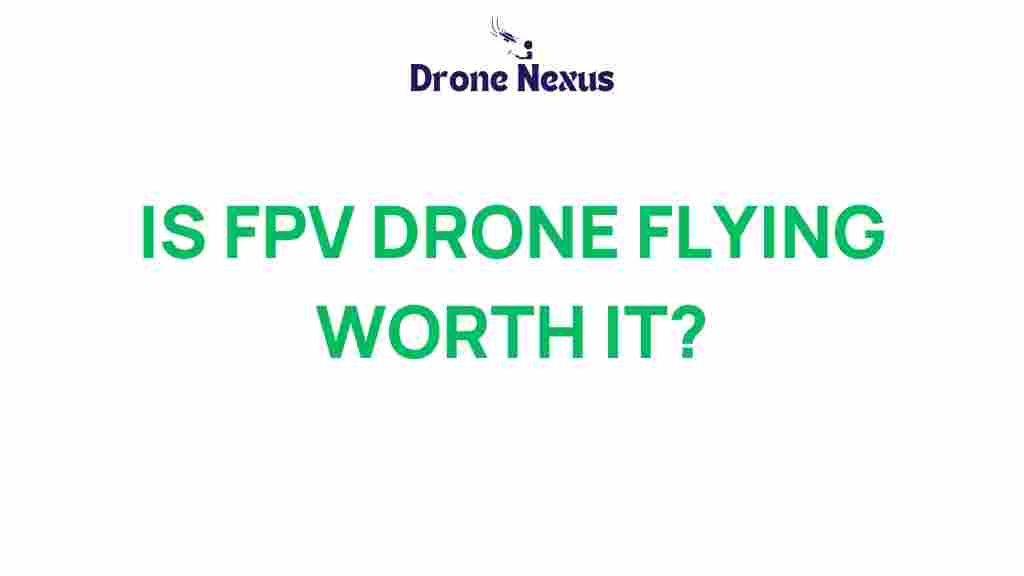Is FPV Drone Flying the Ultimate Adventure for Aerial Enthusiasts?
For those looking to elevate their aerial adventures, FPV drones offer an exhilarating experience that combines cutting-edge technology with the thrill of flight. As the popularity of drone flying continues to surge, many enthusiasts are turning to First Person View (FPV) drones for a more immersive experience. But what makes FPV drone flying the ultimate adventure for aerial enthusiasts? In this article, we’ll explore the captivating world of FPV drones, from their setup to flying techniques, and everything in between.
What Are FPV Drones?
FPV drones are specially designed drones that provide real-time video feed to the pilot through goggles or a screen, allowing them to experience flight as if they were in the cockpit. Unlike traditional drones, which are operated using a remote control with a line-of-sight perspective, FPV drones deliver a more engaging and thrilling experience. Here are the key features that define FPV drones:
- Real-Time Video Transmission: FPV drones are equipped with cameras that transmit live video to the pilot.
- Goggles: Most FPV setups include goggles that provide an immersive flying experience.
- Agility: FPV drones are often lighter and more agile than standard drones, making them perfect for racing and acrobatics.
- Customization: Many FPV drones can be customized with various components, enhancing performance and capabilities.
The Thrill of FPV Drone Flying
What sets FPV drones apart is the feeling of immersion they provide, which is unparalleled in the world of drone flying. Here’s why FPV flying is often considered the ultimate adventure:
- Immersive Experience: Flying through the skies while wearing FPV goggles creates a sensation of being in control of the drone.
- Freedom to Explore: FPV drones allow pilots to explore remote and hard-to-reach areas from a new perspective.
- Competitive Edge: FPV racing has become a popular sport, providing an adrenaline rush and a community for enthusiasts to join.
Getting Started with FPV Drones
Before venturing into the exciting world of FPV drones, it’s essential to understand the components and setup process. Here’s a step-by-step guide to getting started:
1. Choose the Right FPV Drone
When selecting an FPV drone, consider the following factors:
- Purpose: Are you flying for fun, racing, or capturing aerial footage?
- Skill Level: Beginners should opt for user-friendly models, while advanced pilots might prefer customizable options.
- Budget: Determine how much you’re willing to spend, as prices vary widely.
2. Gather Essential Equipment
Besides the drone itself, you’ll need other equipment to get started:
- FPV Goggles: These provide the immersive viewing experience while flying.
- Remote Controller: A reliable controller is crucial for precise maneuvering.
- Battery and Charger: Ensure you have enough power to enjoy extended flying sessions.
- Camera: If your drone doesn’t come with one, consider adding a lightweight FPV camera.
3. Learn the Basics of Flying
Before taking to the skies, familiarize yourself with the fundamental flying techniques:
- Throttle Control: Learn to manage your drone’s altitude and speed.
- Turning: Practice smooth turns to maintain control.
- Stabilization: Understand how to use stabilization modes, especially for beginners.
4. Practice in a Safe Environment
Finding a suitable place to practice is essential. Look for open fields or designated drone flying areas. Remember to follow local regulations regarding drone flights to ensure safety and compliance.
5. Join the FPV Community
Engaging with other FPV enthusiasts can enhance your experience:
- Online Forums: Join discussions on platforms like Reddit or dedicated drone forums.
- Local Meetups: Attend local drone meetups or competitions to learn from experienced pilots.
- Social Media Groups: Follow FPV groups on social media for tips, tricks, and updates.
Troubleshooting Common Issues
As with any technology, you may encounter issues while flying your FPV drone. Here are some common problems and troubleshooting tips:
1. Signal Loss
If you experience signal loss while flying, try the following:
- Check Antennas: Ensure antennas on both the drone and goggles are securely connected.
- Fly in Open Areas: Avoid flying in areas with heavy interference, such as urban environments.
- Adjust Frequency: Switch to a different frequency if you encounter interference.
2. Poor Video Quality
If the video feed is choppy or unclear, consider these solutions:
- Check Camera Settings: Ensure your camera settings are optimized for quality.
- Inspect Wiring: Look for any loose or damaged wires connecting the camera.
- Upgrade Equipment: If issues persist, it may be time to invest in a higher-quality camera.
3. Short Flight Time
If your drone doesn’t stay airborne for long, try these tips:
- Battery Health: Regularly check the condition of your batteries and replace them if necessary.
- Weight Management: Ensure your drone isn’t overloaded with unnecessary equipment.
- Flight Modes: Use more efficient flight modes to extend battery life.
Conclusion
In conclusion, FPV drones provide an unmatched adventure for aerial enthusiasts. From the thrill of immersive flying to the camaraderie found within the community, there’s no denying the allure of FPV drone flying. Whether you’re a seasoned pilot or just starting, the world of FPV offers endless possibilities for exploration and enjoyment.
Before you take off, ensure you have the right gear, practice diligently, and engage with fellow enthusiasts to enhance your experience. As you soar through the skies, you’ll discover why FPV drone flying is often hailed as the ultimate adventure for those who crave aerial excitement.
For more information on drone flying, check out this comprehensive guide. And if you’re looking to join a community of drone enthusiasts, visit Drone Racing League for events and competitions.
This article is in the category Technology and created by DroneNexus Team
